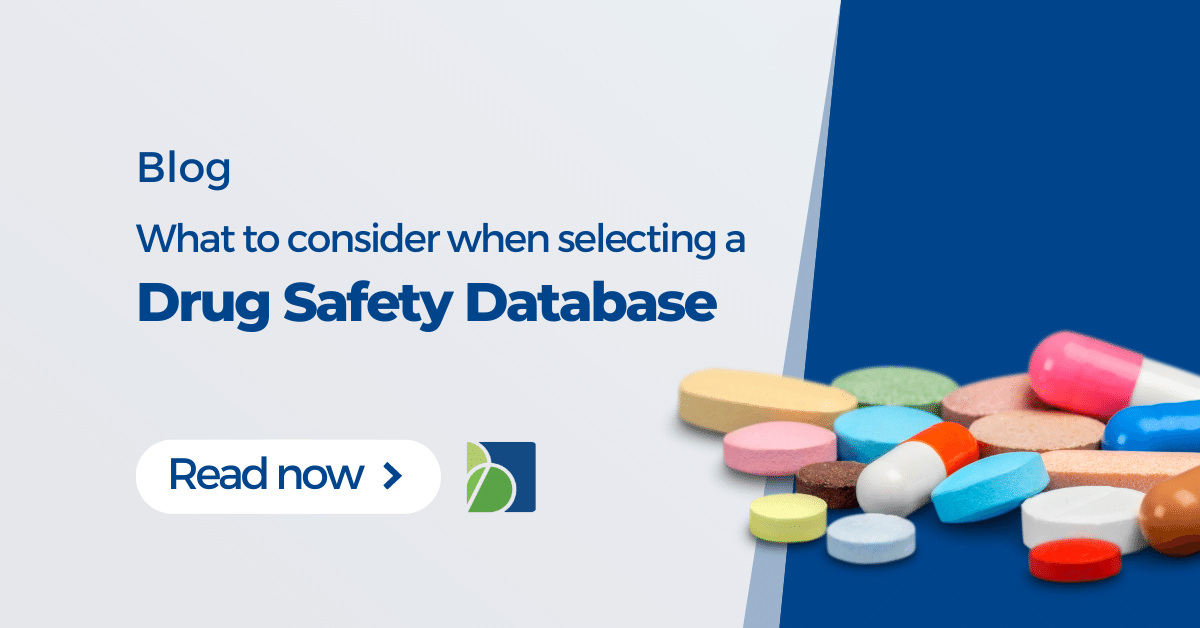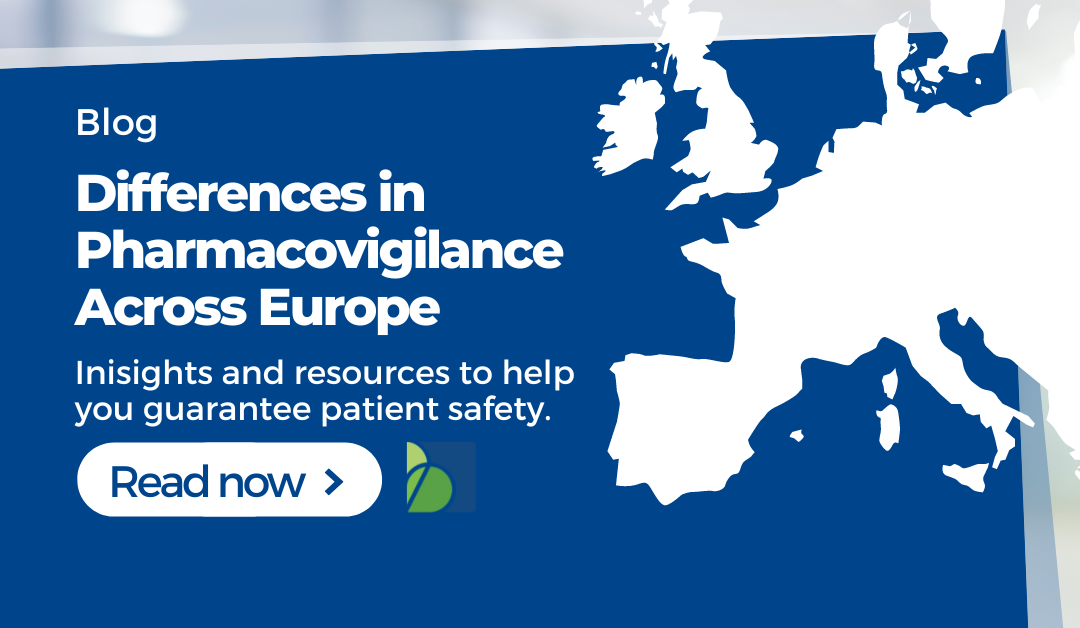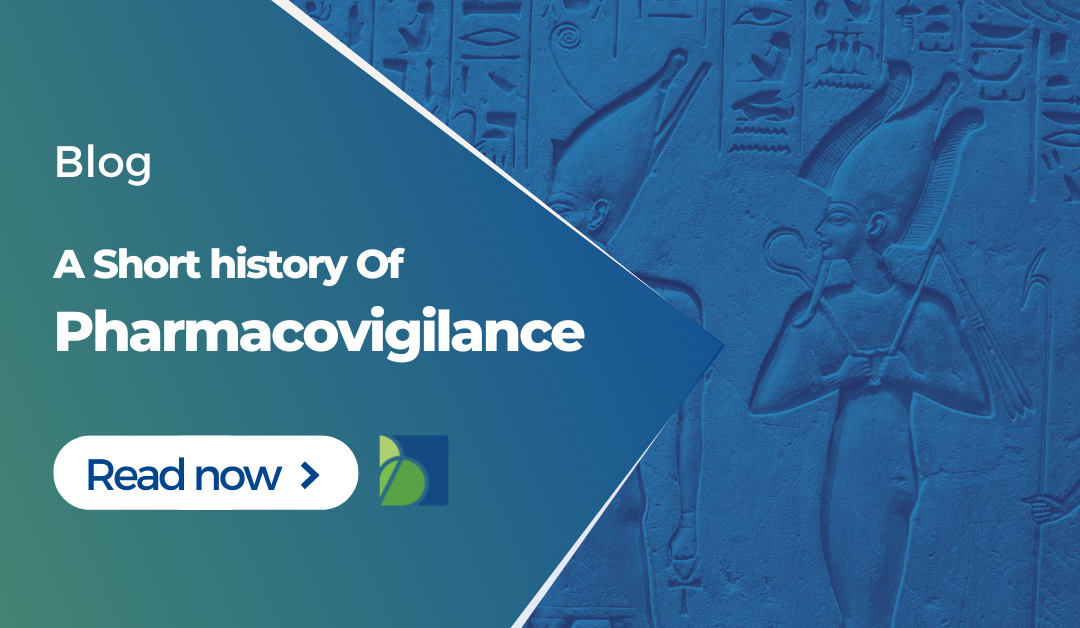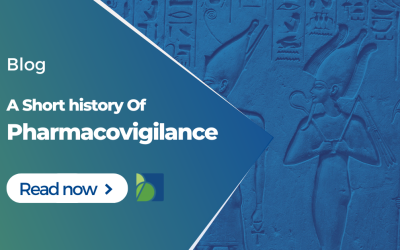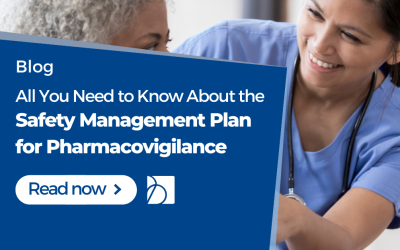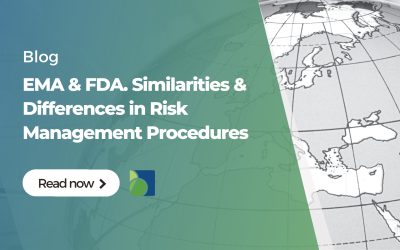Selecting a Pharmacovigilance Drug Safety Database
The WHO defines pharmacovigilance (PV) as the science and activities related to detecting, assessing, understanding, and preventing adverse effects of a medicinal product or any other possible drug-related problems. A drug safety database is a fundamental component of a PV system. It contains the ICSRs and usually provides analysis, visualization, and reporting options. There are many commercially available databases to choose from, each with its unique features and advantages. So how do you choose the pharmacovigilance safety database best suited for you? This blog post first describes what a safety database is and its functions, and then we discuss some of the most commonly used safety databases. We will also discuss which factors to consider when choosing a pharmacovigilance safety database.
In a previous blog post, we described how to set up a Pharmacovigilance system. Essentially, a PV system aims to collect information about Adverse Events (AEs), medication errors and counterfeit products. AE reports are called Individual Case Safety Reports (ICSRs). AEs/ICSRs are analyzed and then assessed for causality and seriousness. If an AE is determined to be causally related to the use of the medicinal product, it is called an Adverse Drug Reaction (ADR). During safety signal management, (an) ADR(s) is/are further evaluated, and you need to take appropriate action, such as reporting to Competent Authorities (CAs) or updating the product safety profile.
What is a Pharmacovigilance Drug Safety Database?
Before we look at what to consider when selecting a drug safety datavbase, we need to understand it. A drug safety database is a repository for ICSRs about one or multiple medicinal products, coming from various sources from multiple geographical regions. Sources can include Spontaneous Reporting System (SRS) databases; solicited reports from healthcare providers, pharmacists and patients; scientific literature; social media; and post-marketing safety studies (e.g. case-control studies). Since these different data sources quickly amount to a large stream of data, modern-day PV safety databases have automated functions to collect and categorize ICSRs. A safety database combines the different data sources into one unified repository. For this purpose, adverse events are coded according to harmonized standards, typically the ICH’s Medical Dictionary for Regulatory Activities (MeDRA) and the WHODrug Global. Automatic detection of errors, missing data and duplicate reports of AEs are common features, and separate databases can be integrated if the same medicinal product is marketed under multiple names around the globe or if different products share the same active ingredients.
Further functions of a drug safety database include the analysis and assessment of AEs, safety signal detection and management, evaluation of the risk-benefit profile of the medicinal product, and individual and aggregate safety reporting to competent authorities. Reporting is normally based on the International Standards Organization (ISO) ICSR standard, which is the International Conference on Harmonization (ICH) E2B(R3). The system should also comply with the FDA’s CFR 21 Part 11 and EMA’s EudraLex Volume 4 Annex 11. Most drug safety databases provide simple templates and automated functions to ensure reports are delivered to CAs and third parties in the correct formats (e.g. for the EMA or FDA) and at required times. Safety databases are also an excellent way to ensure compliance of PV reporting to up-to-date regulation by providing automatic patches and upgrades of regulatory submission processes and, for example, by automatically recoding MeDRA-based data entries.
Which Drug Safety Databases exist?
The two most commonly used safety databases are Oracle’s Argus Safety and ArisGlobal’s LifeSphere Safety Multivigilance (ARISg). Other well-known examples are Ennov Group’s PV Works, Sarjen’s PvEdge (formerly PvNET), AB Cube’s SafetyEasy and Veeva’s Vault Safety. We will limit our discussion to Argus Safety, ARISg and Veeva Vault Safety.
Oracle Argus Drug Safety Database
Argus Safety is a single global safety database. It uses automation to simplify case processing and allows for extensive analytics and reporting. The database can be configured to the individual client’s needs to create dynamic workflows or specific rules for reporting. It can also be integrated with other third-party or internal PV systems. Regulatory compliance is achieved with automated distribution and submission of reports by allowing the configuration of specific rules appropriate to the respective medicinal product(s) and providing reporting and compliance metrics to its users. Features such as automated reporting, document storage and integration with safety signal detection and management make it an integral PV safety database. The drug safety profile can be updated and integrated into risk management decision-making.
Key features include:
- Worldwide cloud-based access
- Automation-assisted case processing
- Duplicate control
- Case-tracking
- Configuration for regional regulatory requirements
- Configuration of client-based rules for SOPs, workflows, review and reporting procedures
- Automated submission options
- Options for integration with other PV processes, such as signal management
- Audit trails
Aris Global Lifesphere Multi-Vigilance
ARISg uses artificial intelligence to automate case processing, facilitate decision-making and make safety workflows more efficient. It is a cloud-based solution that allows for easy updating to new regulatory standards and global PV teams to operate in one real-time system. You can visualize reporting measures and quickly generate compliance and local or regional regulatory reports. The safety database can be configured to individual client’s needs, the medicinal product(s), study/ies, reporting requirements etc.
Key features include:
- Global cloud-based access with real-time review of cases
- Automated coding
- Automated duplicate checks
- Automated validity and triage of cases
- Configuration of client-based SOPs, workflows, review and reporting procedures
- Integration with other PV systems, such as safety signal management
- Automated case tracking and follow-up
- Real-time benefit-risk analysis
- Global automated submission options
Veeva Vault Drug Safety Database
Veeva Vault Safety is part of the Veeva Vault Development cloud. It enables efficient processing ICSR processing, informed decision-making based on real-time data and regulatory compliance to up-to-date regulations and standards. Veeva Vault uses automated intake of AE data, extracting information from unstructured data and formatting and coding this. AI is also used for detecting duplicates and for suggesting follow-up actions. It provides an interactive dashboard with real-time data, allowing accurate safety data management and report production monitoring. Regulatory compliance is assured with automatic upgrades, and complete electronic submission of individual and aggregate reports to CAs is possible, including in the CIOMS I and MedWatch 3500A formats.
Key features include:
- Global cloud-based access
- Automated case intake
- Automated formatting and coding
- Efficient safety case processing using automated duplicate checks and follow-up
- Generation of submission-ready reports for CAs
- Active monitoring and notification of ADRs with special importance
- Configuration of client-based SOPs, workflows, review and reporting procedures
- Integration with the other Veeva Vault Development cloud systems, including safety signal management and systems for clinical operations, regulatory affairs and quality management
Selecting a Drug Safety Database
There are several aspects of drug safety databases that you should consider when choosing one. We will discuss each aspect shortly below.
Cloud-based Drug Safety Database
Whether a safety database is cloud-based or a program for which a VPN network and firewall are required makes the difference between easy global access to real-time data or not. This access allows for optimal tracking of cases and enables decision making based on the latest available data. Furthermore, patches and upgrades to the system and updates to regulatory requirements and international standards are readily made available on the system.
Potential Data Sources
Pharmacovigilance involves a growing variety of data sources. For example, in recent years, data from social media, personal wearable devices and other Real-World Data (RWD) has become a regular practice in PV. This increase in variability means that a safety database needs to be flexible enough to process these and future new forms of data and the corresponding regulations regarding privacy policies.
Automation Options for your Drug Safety Database
The increasing use of artificial intelligence (AI) is one of the most exciting developments in PV of the last decade. Safety databases that use AI to automate the processing of ICSRs already show improved accuracy, efficiency, simplicity and an accelerated process, for instance, by automated case coding, duplicate checks, validation and categorization, and case tracking and follow-up. In the future, further automation in the whole process is expected, including in data collection.
Compliance
Compliance with international and national regulatory requirements is easier when using a validated safety database system. The established systems have a proven track record for successfully upgrading systems and thereby workflow and SOPs, to new regulations, from the ICH E2B(R2) to the ICH E2B(R3) standards. Regulatory compliance can be built into SOPs and workflows using a safety database.
Interoperability & Compatibility with other (Drug Safety) Systems
The processing and assessment of ICSRs in a safety database are closely related to other aspects of PV. Clearly, safety signal detection and management are closely related and update the labelling information or the Risk Management Plan (RMP) of a medicinal product. In addition, other clinical development activities, regulatory affairs (RA) or medical information are also associated with PV. Therefore, it is helpful if the systems for the processes involved can be easily linked to the safety database and preferably have a similar interface.
Configuration Options and Flexibility
As mentioned above, a safety database must have the flexibility to include new data sources or new regulatory requirements. However, the specific requirements for a safety database always depend on the client’s needs, the number of medicinal products, the type of products, the clinical studies, reporting requirements for the marketed regions etc. Logically, a giant pharmaceutical enterprise with an extensive product portfolio would need a more sophisticated functionality of the safety database than a start-up with one product. At the same time, the flexibility to scale up functionality in the future is essential to have in the safety database.
Ease of Use of your Drug Safety Database
The safety database’s ease of use first links to the configuration and complexity of the client’s needs. Furthermore, using the database in a professional setting, including data entry, analytics, reporting and risk-benefit analyses, should be straightforward to avoid unnecessary involvement of IT experts or the system helpdesk.
Costs and Cost-Effectiveness
Finally, the cost of licensing the safety database is obviously a factor. In this respect, the cost-effectiveness should also be considered, for instance, when it comes to automated processing of ICSRs, which would otherwise require more manual work. Another consideration is not to over-simplify or over-customize the safety database to current needs. For example, if requirements change or the product portfolio increases in the future, the database could be difficult to adjust.
Biomapas and Drug Safety Databases
Considering the aspects mentioned above for choosing a safety database, all safety databases discussed in this blog are outstanding candidates for your PV system. Argus Safety, ARISg and Veeva are all cloud-based systems with extensive automation options. They have a proven track record for dealing with new data sources and regulatory changes, and they are flexible systems that allow configuration and interaction/integration with other (safety) systems.
Our in-house system is Veeva Vault Safety, an excellent solution for biopharma companies. Veeva Vault System allows complete life-cycle management of products, enabling integration with product registration, Regulatory Affairs and Medical Information services.
However, we have experience working with all significant drug safety databases, and we can offer customized or hybrid solutions involving different third-party or in-house developed software packages.



